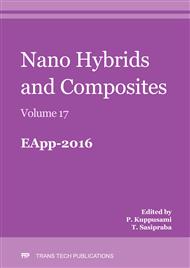p.1
p.10
p.18
p.24
p.31
p.37
p.44
p.55
Numerical Modeling of Thermophoresis and Diffusiophoresis in Water-Alumina Nano Fluids
Abstract:
Analysis of major heat transfer mechanisms in nanofluids specifically, thermophoresis and diffusiophoresis under pool boiling condition is attempted in this paper. Basic approach of the study tries to correlate thermophoresis in nanofluids to the behavior of rigid particles in gases. Ultimate objective of the study is to elucidate the thermophoresis/diffusiophoresis mechanism in nanofluids using thermophoretic velocity and viscosity of nanofluids. Thermophoretic velocity of water-alumina nanofluid analyzed in this study is assumed to be inversely proportional to fluid viscosity. Experiments and Computational Fluid Dynamics (CFD) tool are used for analyzing the effects of thermophoresis and diffusiophoresis on the heat transfer enhancement process. The numerical model considered for the study is a (2-D) rectangular container with the dimensions of the experimental set-up and a stainless steel heater inside it. Energy equation constituent of ANSYS Fluent is solved using a pressure based implicit solver and appropriate boundary conditions to obtain the temperature distribution pattern of the model. SIMPLE is used as the pressure correction method with Gauss-Siedel iterative method. Numerical simulation results for temperature distribution are validated using experimental readings. Thermophoretic velocity outputs derived from numerical simulation show significant movement of nanoparticles very close to realistic values. However, numerical results of viscosity, specific heat and diffusion coefficient of nanofluids were found to deviate from the results of the experiments. The dependency effect of these parameters needs further attention.
Info:
Periodical:
Pages:
24-30
Citation:
Online since:
August 2017
Authors:
Price:
Сopyright:
© 2017 Trans Tech Publications Ltd. All Rights Reserved
Share:
Citation:


